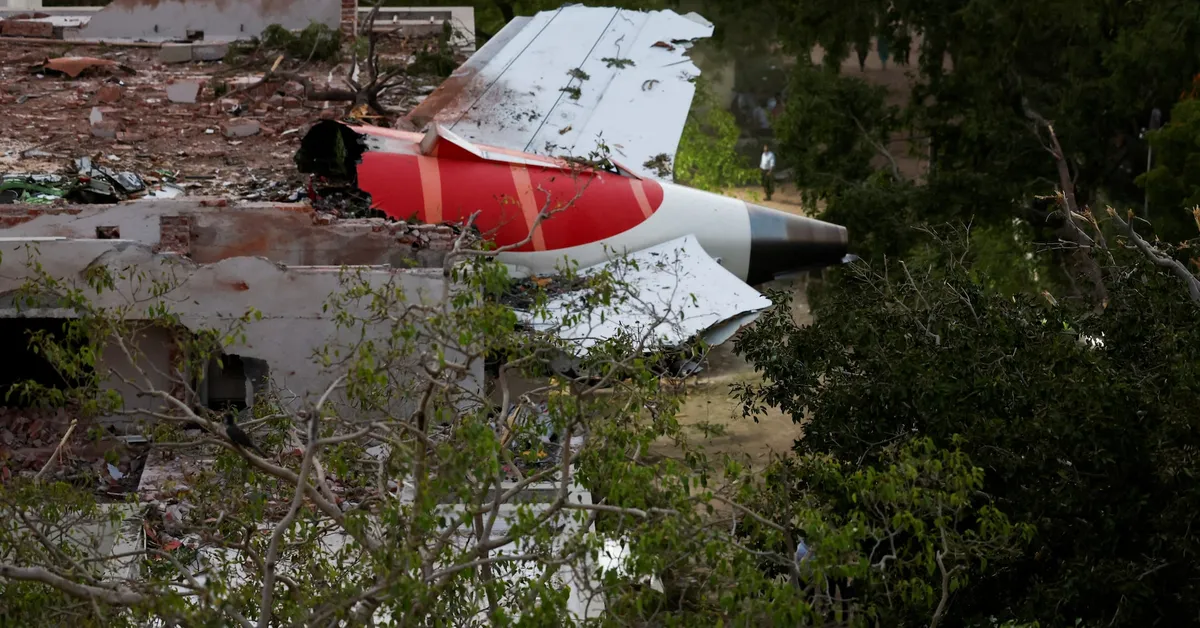
NEW DELHI, June 14 (Reuters) - The recent Air India plane crash, which tragically claimed at least 270 lives, has reignited discussions about aviation safety and the factors contributing to this catastrophic event, marking it as the worst aviation disaster in a decade. As authorities meticulously sift through evidence, they are gradually honing in on potential causes.
One of the most significant pieces of evidence currently under review is a 59-second CCTV video clip that captures both the takeoff and the subsequent crash of the Air India aircraft from the Sardar Vallabhbhai Patel International Airport in Ahmedabad, located in the western state of Gujarat. This crucial footage was obtained from a camera positioned to the far left of the runway, near a barbed-wire fence. The video illustrates the Air India plane's takeoff, during which it gains altitude, flies horizontally for a brief period, and then begins a downward descent approximately 17 seconds post-takeoff. Notably, there are no visible signs of fire around the engine or elsewhere as the aircraft descends, having already crossed the airport's boundary wall. The landing gear remains open throughout the entire clip, and the plane crashes roughly 33 seconds after taking off, resulting in a massive fireball.
According to India's aviation ministry, the pilots issued a mayday call to air traffic controllers at 1:39 PM local time on Thursday. However, attempts to communicate with the pilots were met with silence. After reaching an altitude of 650 feet, the plane began to lose height and ultimately crashed into a nearby B.J. Medical College hostel. Images captured shortly after the crash reveal wheels and other aircraft parts lodged into the building's walls, while student belongings, including clothes and books, were scattered across the floor. Steel tumblers and plates, still containing food, were observed on the few remaining intact tables. A pungent odor of jet fuel lingered in the air as authorities worked to clear the area of charred trees and debris.
Since the incident, Air India officials and numerous investigators from the Indian government have been present at the crash site. While no preliminary findings have been released, insiders indicate that investigators are focusing on at least three potential areas of concern. They are examining whether there were any issues related to engine thrust, which is critical for the aircraft's forward movement. Additionally, the functionality of the flaps is under scrutiny, and anti-terrorism squads have joined the investigation teams to rule out foul play. Another significant point of interest is the prolonged opening of the landing gear after takeoff. Interestingly, a potential bird strike has not been prioritized in the investigation. Officials are also exploring any possible maintenance issues related to Air India that could have contributed to the crash.
In a crucial development, India's aviation ministry confirmed that investigators and rescue workers successfully recovered the digital flight data recorder, one of the two essential black boxes, from the rooftop of the building into which the aircraft crashed. Unfortunately, the cockpit voice recorder, the second black box vital for understanding the cockpit's last moments, has not yet been located. In response to the crash, India's aviation regulator has mandated additional maintenance protocols for Air India's Boeing 787-8/9 aircraft equipped with GEnx engines. This includes a one-time check of the take-off parameters for all flights departing from midnight on June 15, along with electronic engine control tests and fuel-related checks.
As the investigation continues, the aviation community and the public are left waiting for answers to the many questions surrounding this tragic incident.